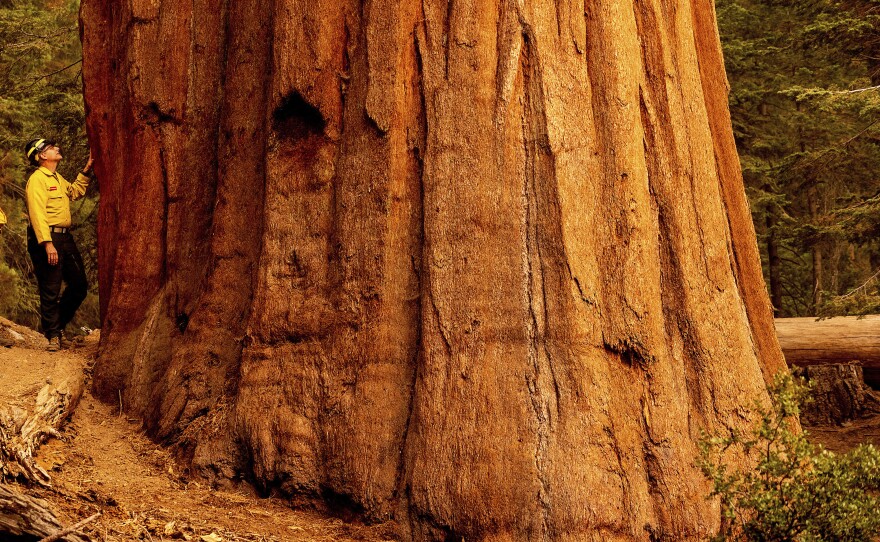Firefighters appear to be getting the upper hand on the Washburn Fire that has been burning in parts of Yosemite National Park for nearly two weeks. The fire has destroyed 5,000 acres and had been threatening the famous Mariposa grove of sequoia trees.
This is the latest in a series of wildfires in recent years that have threatened California’s sequoia trees, which are among the oldest and largest organisms in the world. Saving the ancient and irreplaceable trees in the midst of climate change has become a priority for the National Park Service.
"It has been a really terrible couple of fire seasons for giant sequoias," said Christy Brigham, chief of resource management and science at Sequoia and Kings Canyon National Parks. "In 2020, during that fire season, we lost 10-14% of all large living sequoias. And then just last fire season, we lost another 3-5%. So we're up to about 20% loss of sequoias from from wildfire."
Brigham joined Midday Edition Tuesday to talk more about what makes the giant sequoias so unique to California and why recent wildfires differ from those of the past.
"The wildfires of today are really different than the fires that these trees evolved with. They're larger in size and they are burning more intensely with hotter and higher flame lengths. And that's really destroying huge areas of forests that would have survived these previous, more frequent, less hot, less intense fires."
The National Park Service is employing multiple strategies to protect sequoias, from prescribed burns, using sprinklers and even wrapping individual trees for extra protection. Brigham said the strategies have worked during recent fires.
"When those fires entered areas where we had done prescribed burning, they dropped to the ground. In some cases, they even went out," Brigham said. "So we know these things work. The uncertainty is around 'can we do the project work fast enough to protect the groves that are still at risk because we're getting so many fires, and such large fires.'"








